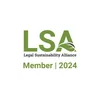Back in 2019, it was encouraging to see that IP Inclusive published guidelines on recruiting for social mobility. It was great to see people in the IP profession actually stand up for this cause. #
For me, one of the positive things to read about were pointers on how to raise awareness of bias around factors like accent, self-confidence and cultural capital. However, it also needs to be accepted that improving social diversity is good for our profession and good for business.
What is getting in the way? #
UK media and popular culture have almost fetishised certain socio-economic backgrounds in recent times (e.g., the last 20-25 years). Shows like Benefits Street and Shameless have reflected on extreme behaviours among those from less well-privileged backgrounds, legitimising the idea that people from those backgrounds are frequently involved in criminal activity and are untrustworthy. This has created a bias against individuals from these backgrounds.
The IP profession needs to make sure we avoid this bias and thankfully, the IP Inclusive guidelines go some way to addressing this by encouraging recruiters to be aware of unconscious biases and to focus on the objective job criteria during the interview process.
Do we need to care? #
The importance of social diversity in the workplace was described by the organisation Inclusive Employers, where they reflect on social diversity as being good for businesses generally on the basis that data shows employees from a low socio-economic background perform on par with, if not better than, their middle to higher socio-economic level colleagues.
The same discussion also highlights that having a variety of social backgrounds and having true socio-economic diversity in the workplace means that your organisation better understands the experiences and barriers of the people they work for and with. These benefits cannot be ignored by the IP profession generally, but there are specific benefits to our profession that we must also observe.
Improved Client Relationships #
The organisation Aspiring to Include has published a report outlining the benefits of hiring people from so-called “lesser” socio-economic backgrounds. Two of those benefits are said to be both dedication and loyalty. Specifically, it is said that people from these backgrounds know how to work hard, are dedicated to their work and are also aware of the value of a good quality job.
Our profession requires us to have a detailed understanding of a client’s situation, which requires hard work but can also only be built or learnt over time. Individuals need to spend a long time building this understanding to truly deliver to the client. It is therefore quite clear that individuals who serve those clients need to be prepared to spend the time and effort on this relationship, and loyal, dedicated individuals are very suited to this purpose.
Untapped Potential #
The report from Aspiring to Include also comments that people from lower socio-economic backgrounds will appreciate the opportunity to show their potential due to restricted opportunities. However, remember, restricted opportunities does not mean the capability is not there.
That is to say, having faith in someone who has, perhaps, not had the chance to show their qualities could be rewarded with an individual who displays those qualities and also exhibits loyalty to your organisation as they appreciate the opportunity that has been provided to them. This means that you are more likely to get employees who are not just going to jump ship at the first opportunity and will help build your company culture.
Improved problem solving #
Clients often present us with problems that require complex solutions and a diversity of ideas. A diverse workplace with people who have lived a wide variety of life experiences will help deliver solutions.
Additionally, having teams with a diverse social background means you are more likely to include those who may be able to relate directly to the client, which leads to more innovative problem solving. This is more likely to result in better service, which, in addition to improving the client relationship, builds the reputation of your practice and can help you develop your business.
How do we achieve a more socially diverse workplace? #
The guidelines from IP Inclusive provide more pointers, but the most important has to be to look at the context of your potential recruit. This does not mean you should lower your expectations when hiring - it means you will need to spend more time on understanding where a recruit is coming from and the potential in that recruit.
There are some achievements which may show a candidate in a good light, however it may be that candidates from some backgrounds may never have the opportunity to reach for that achievement. This could be because it is not of interest, or because it is just infeasible based on their circumstances. Your background can impact your confidence, your scope of interests and your exposure to opportunities. This needs to be appreciated by those involved in the recruitment process.
Steps like removing indicators of a person’s background may well help to address bias, but it could also remove the opportunity for a recruit to tell their story. Recruits should be given the chance to tell their story, and in their regional accent!
Thank you to Managing IP for originally publishing this piece and for continuing to support thought leadership across the IP community.





















